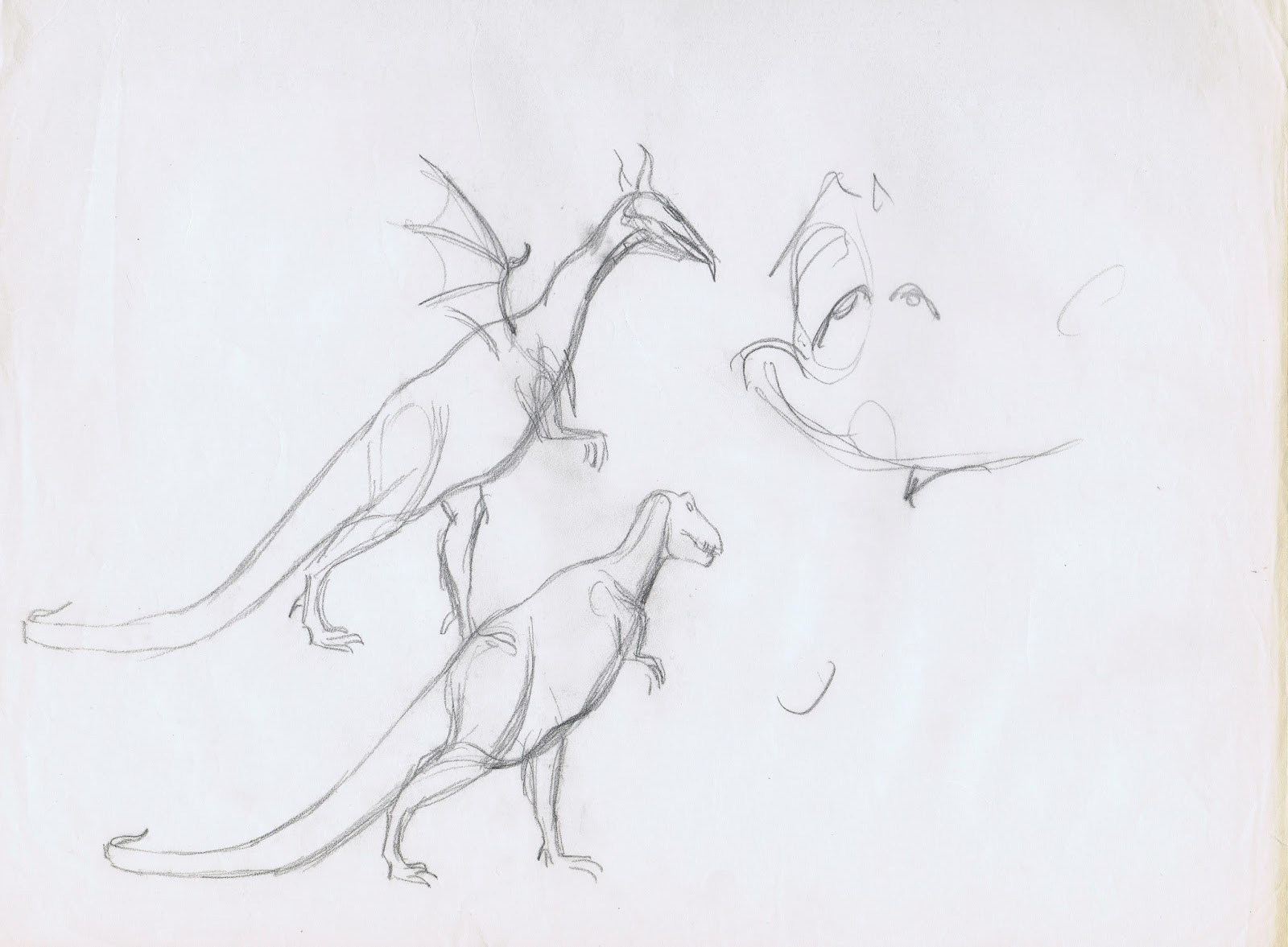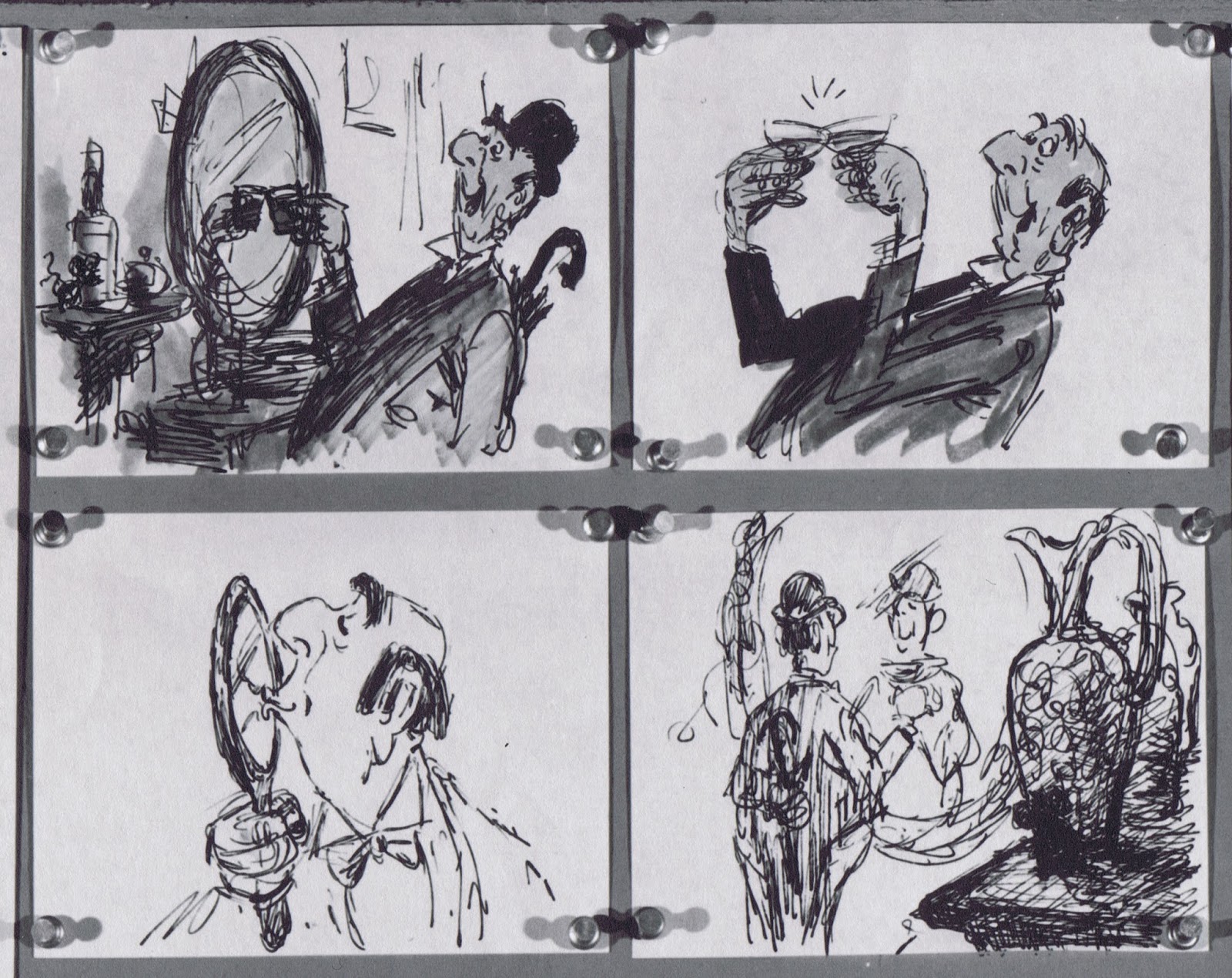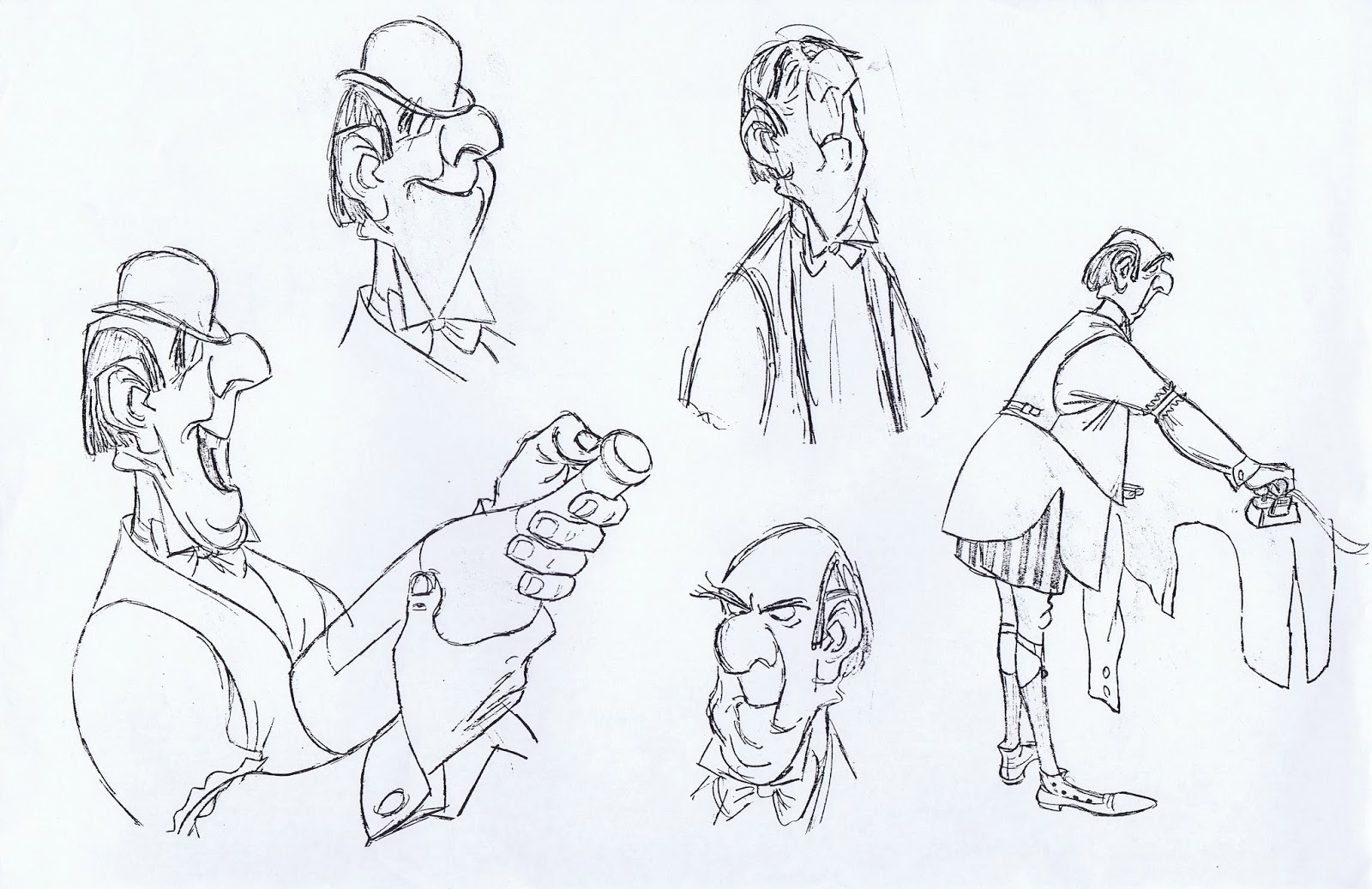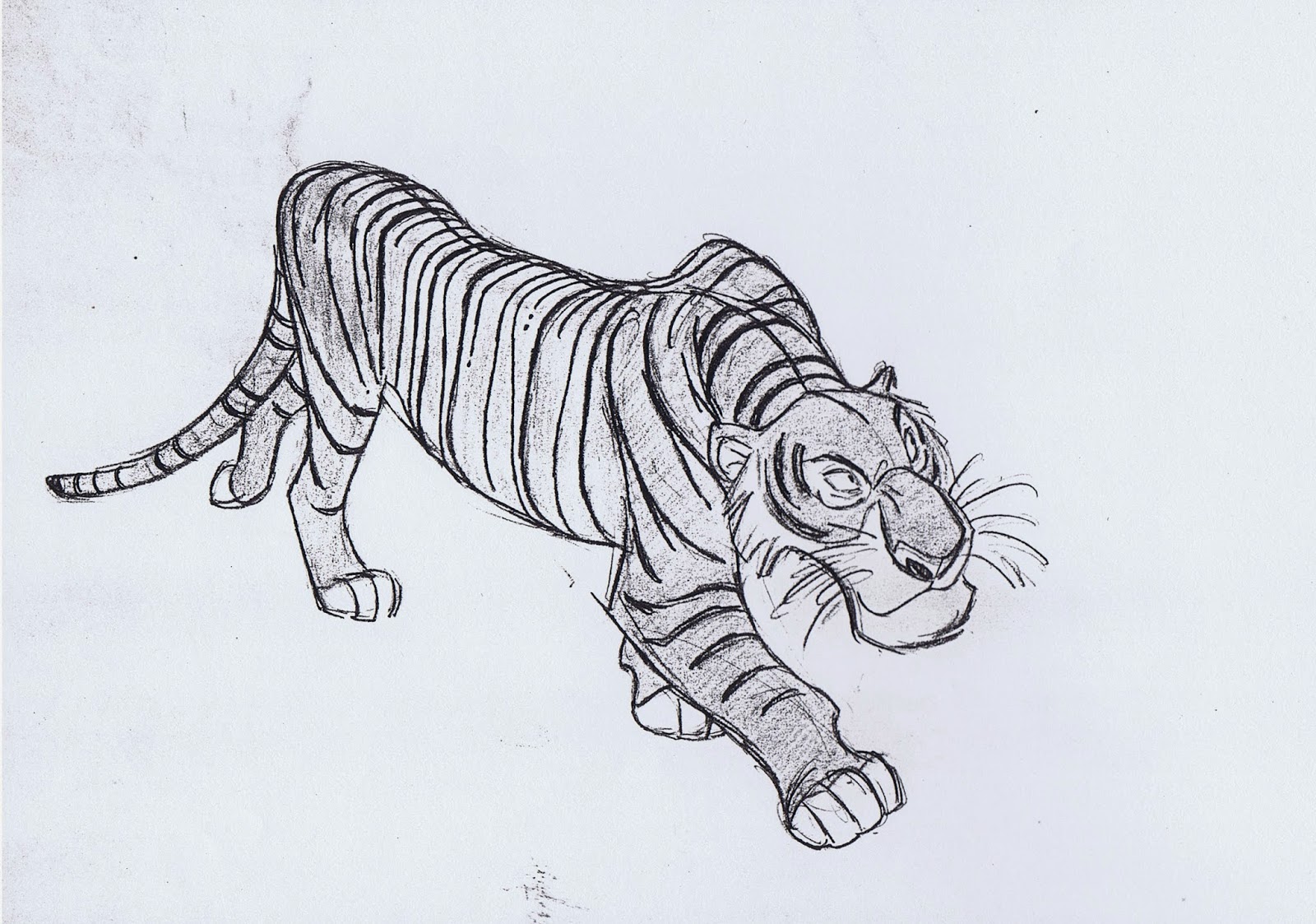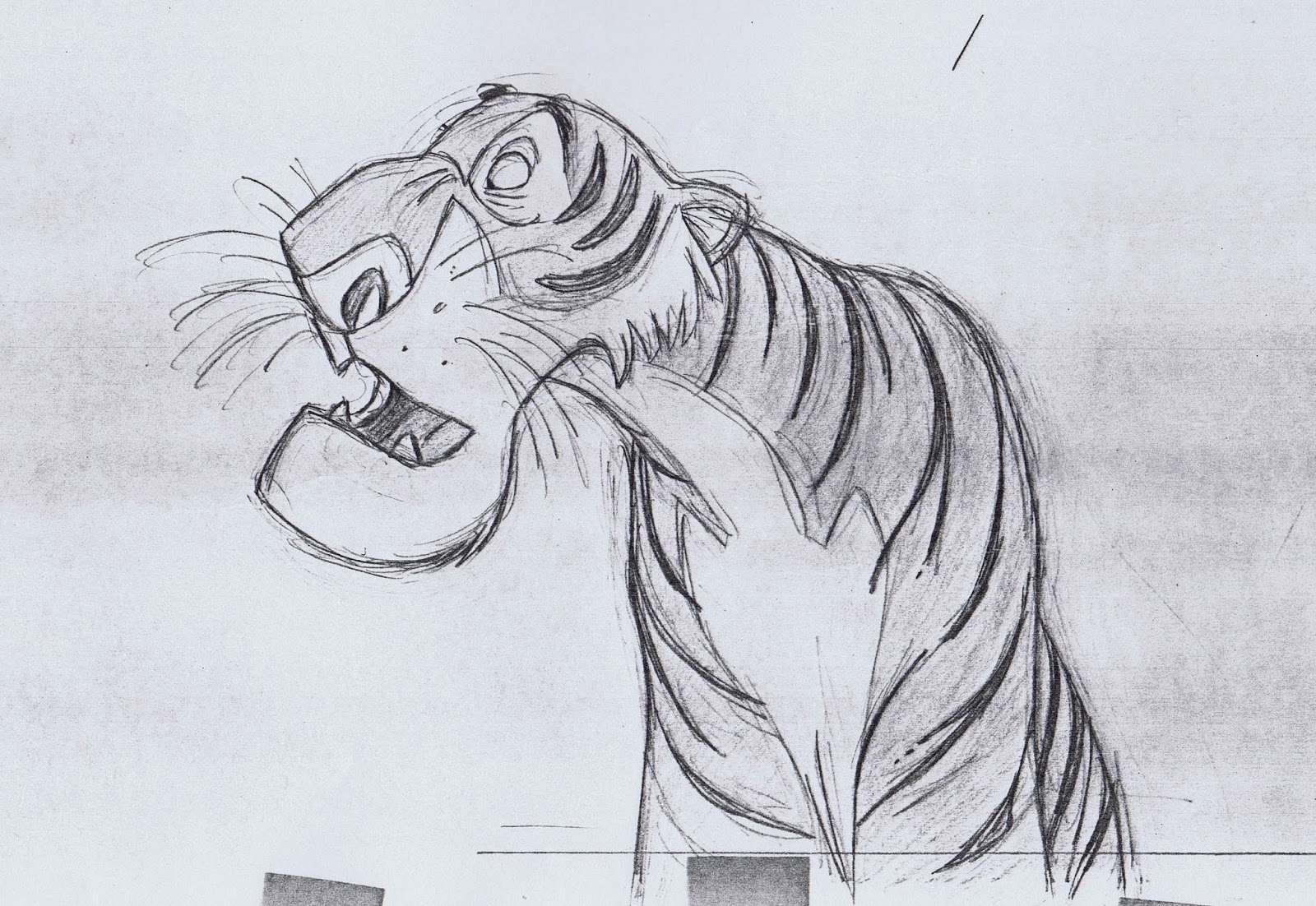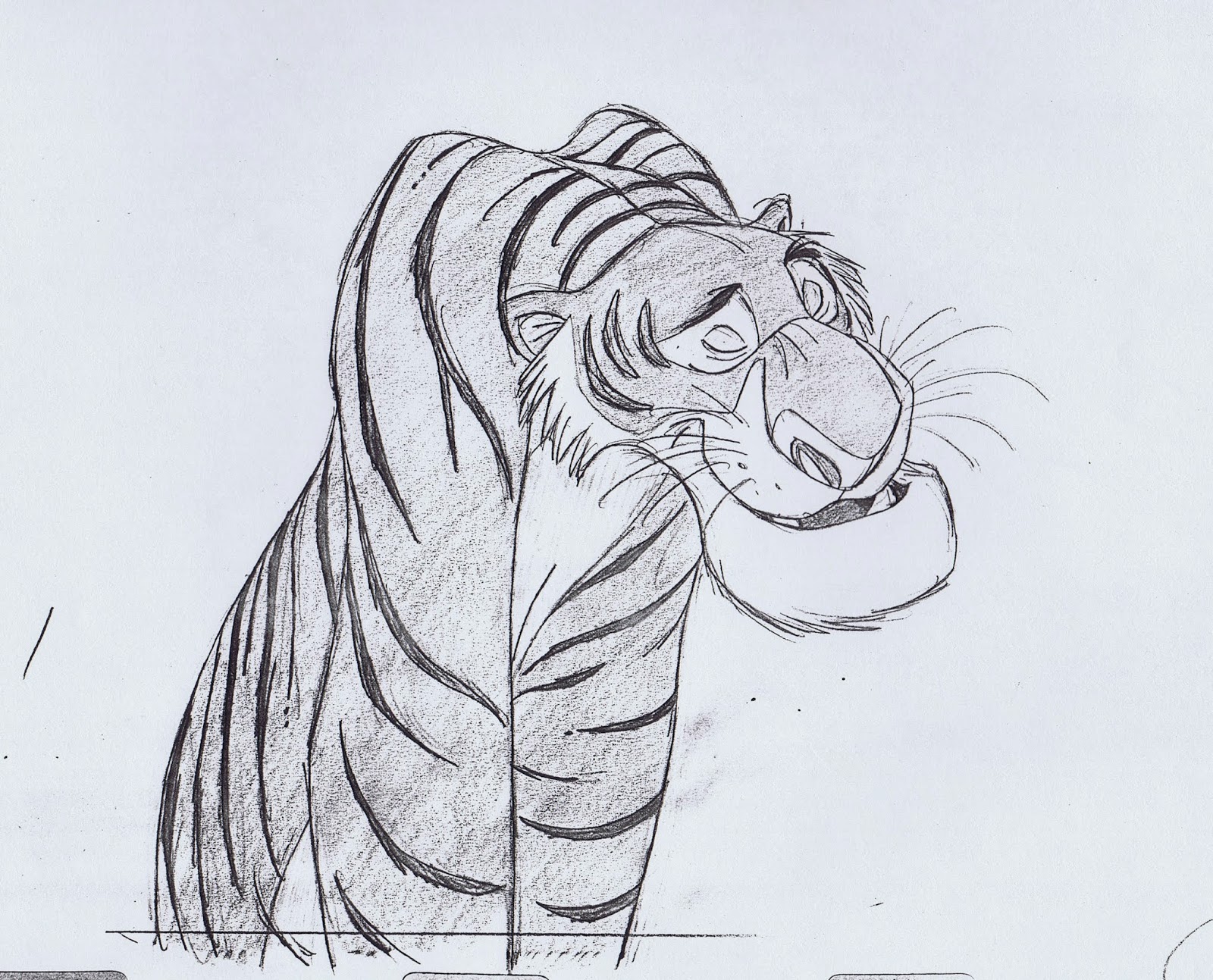Frank and Ollie talk about this Ken Anderson sketch in their book The Illusion of Life.
It shows Sir Hiss sulking in his basket, after some verbal abuse from Prince John.
Ollie Johnston saw the comic potential for his animation right away, and he ended up using Ken's drawing for the final pose of the scene.
I remember laughing out loud in the theatre, when I watched this moment in the film Robin Hood. The idea that the snake would get into this relaxed, human pose was surprising and came out of nowhere. The situation is funny, because of Ken's concept, but also because of Ollie's animation.
As Sir Hiss lifts up parts of his body, they land on the basket's edge with real overlap and weight.
These are a few of Ollie's quick thumbnail sketches that show how he approached the scene.
Four main key drawings, combined with the layout.







